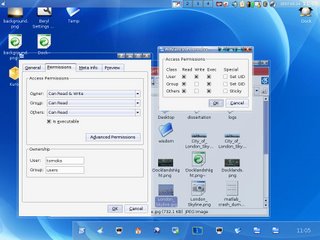/computer/linux file system 2

We already know that one of th main advantages of Linux file system is the ability to regulate ownership of each directory and each file. The permissions system is, at the same time, very flexible. Today we shall see why.
For a file apart from its user owner there is also a group owner.In other words, each file is owned by one user and one or more groups of users. Any users can be organized in groups. Each group can have its own name. Groups and group names are defined by the superuser - the root.We shall see how to define a group later.
User owner and group owner may be unrelated. For example, a file is owned by user "tomoko" and group "students", but, at the same time, "tomoko" not necessary needs to be a member of group "students" to own a file. Note that a user not necessary needs to be a part of any group. Same way, a user also can belong to several groups simultaneously. Usage of groups allows a very convenient way of permission control. For example, if I want some files to be available to several people I just need to create a new group and add them to the group. After that I can make this group own the files I want.
For each file and directory there are three basic ways how a user can access them: read, write and execute. Directories are also kind of files.


0 Comments:
Post a Comment
<< Home